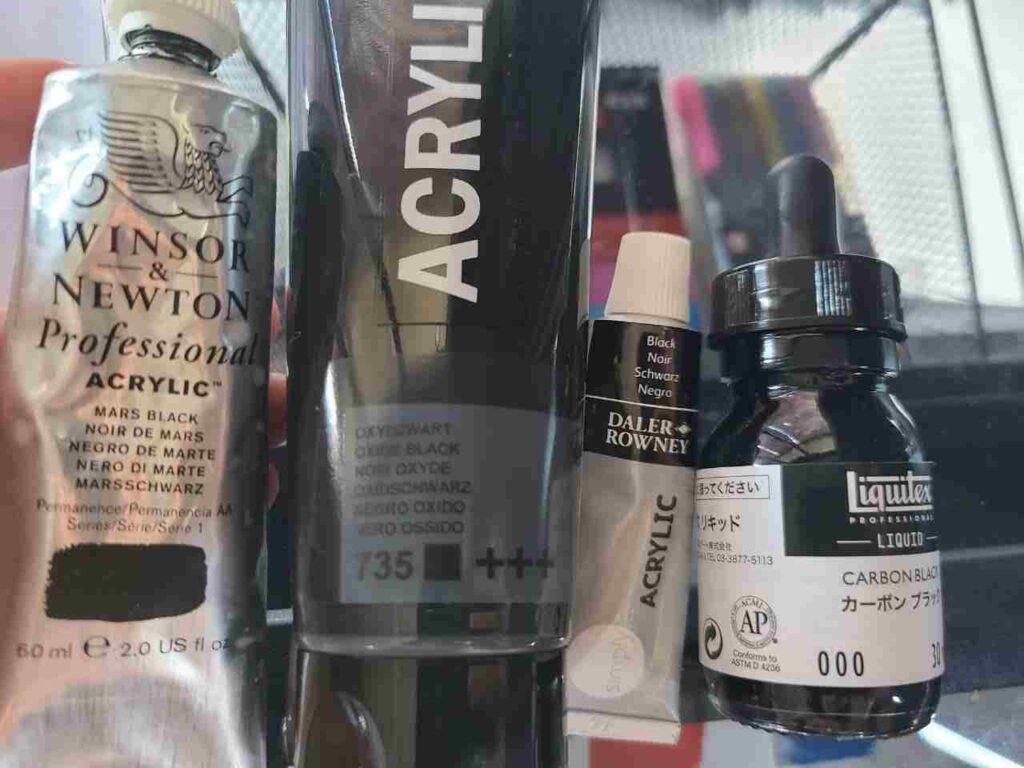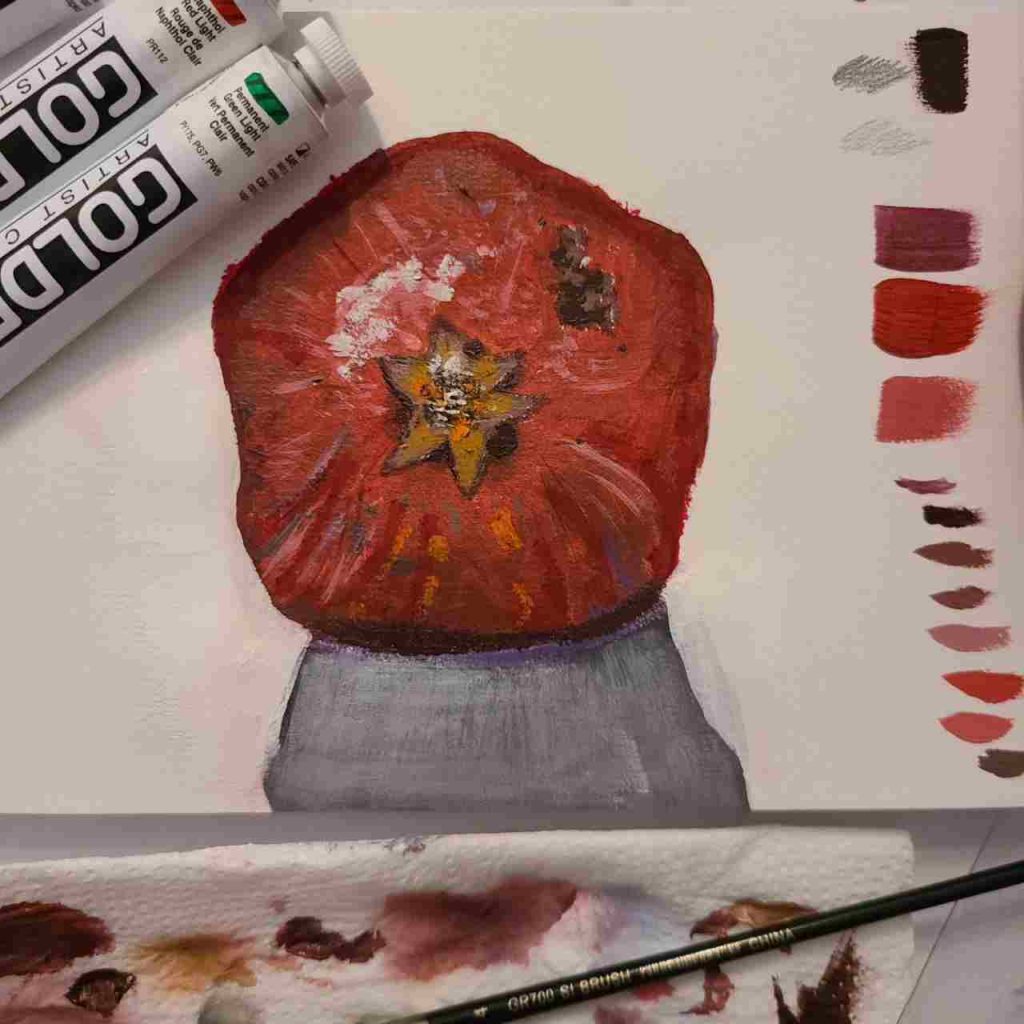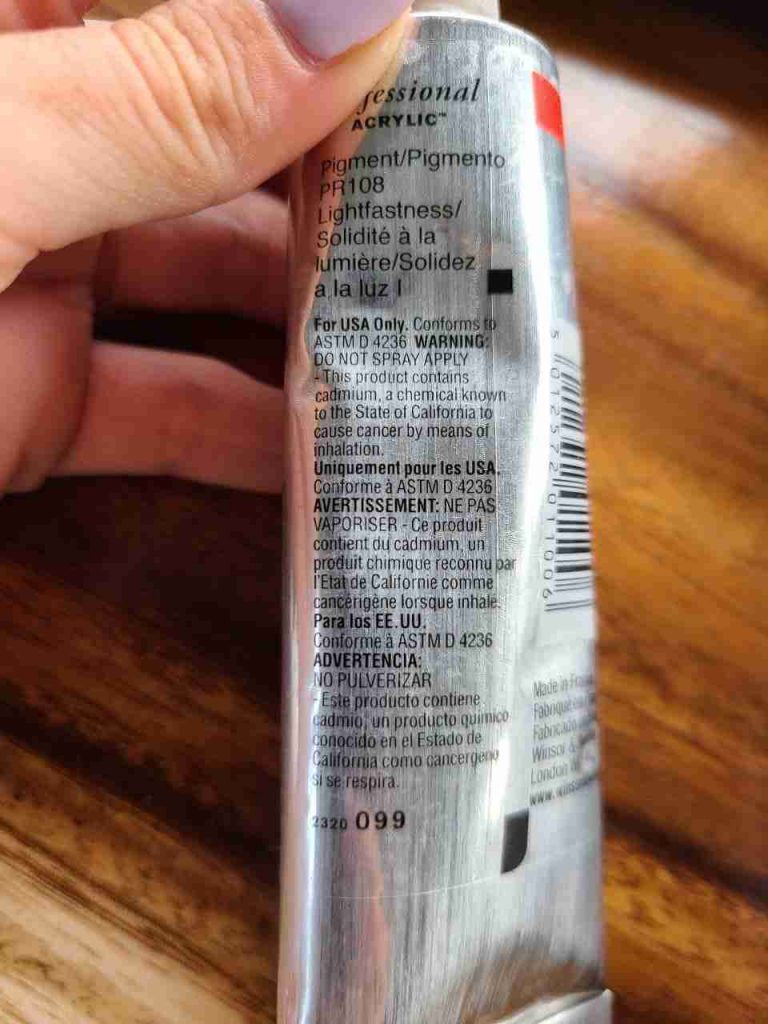Last Updated on May 13, 2024 by Masha Eretnova
Acrylic paint is a versatile and fast-drying type of paint made from pigment suspended in an acrylic polymer emulsion.
It can be diluted with water to create translucent washes or used straight from the tube for a bold, opaque color.
It can be used on a variety of surfaces, including canvas, paper, wood, fabric, and more. Once dry, acrylic paint forms a durable, water-resistant layer suitable for both indoor and outdoor use.
But at the same time, some painters still don’t like it. Why? Let me introduce you to some cons that stop pros from using acrylic paint.
Detailed article: What is Acrylic Paint Made Of? Ingredients Explained
Advantages and Pros of Painting with Acrylics I found
- Versatile
There are very few painting (and not) surfaces that won’t work with acrylic paint with simple preparation or without any at all.
Just to name a few: canvas, paper, glass, ceramics, wood, plastic, fabrics and leather, metal, rock/concrete, walls and furniture, even outdoors, and many others.
No other paint can be used on all these surfaces just like acrylic paint.
- Variety of types
I can name a few types of acrylic paint, each will have its own characteristics and use, broadening even more our painting possibilities.
Ex., fluid acrylic paint (pouring paint), soft body acrylic, heavy-body acrylic paint, open (slow-drying) acrylic, Interactive acrylic paint (that can be reactivated), special acrylic (for a specific surface, like fabric acrylic paint, acrylic paint for ceramics, etc), acrylic ink, and many more.

To compare, gouache can only be traditional and acrylic and that’s it!
Different types are not just names – those are subtle differences in composition and performance that were invented and tested by brands, and quickly adapted by painters.
- fast-drying
Oil paint was the main painting medium for centuries.
But modern times brought a problem – we never have enough time. And oils with their month-long drying time were not that convenient to use for some artists.
So brands came up with a fast-drying professional medium – acrylic paint.
And compared to oils, acrylics have record drying time. Some thin layers will dry in just a few minutes. Vs days or weeks for oils – imagine the step forward!
- Easy to correct mistakes
With acrylic paint, it is easy to cover up any mistake – you just make a new layer and that’s it. Coupled with fast drying time it means that you can work and rework a painting very fast, which reduces stress 🙂
At the same time, you can not only fix something, but you can alter some properties of acrylic paint using a myriad of acrylic mediums.
Here is a liquid that will make it suitable for airbrushing, here – for fabric painting, this bottle will slow down the drying time, and this one will make the paint iridescent, and so on.
Just by adding some mediums you can create a completely new effect, which means you don’t have to buy a whole new paint set, you can apply the same medium to any color you want.
- permanent
Professional acrylic paint is permanent once dry, water-resistant, and can hang in galleries for the whole next century.
Impressive, huh?
In terms of durability in art, they are on par with oils. But unlike oils, you can use acrylic even outdoors.
- affordable
Certain grades of acrylic paint like craft paints or student-grade are affordable for anyone who wants to try painting.
And I think it is amazing, as painting and art, in general, has such a powerful therapeutic effect, that it should be affordable and accessible to everyone.
A bottle of craft acrylic paint like Apple Barrel can cost only a few cents!
Read more: Best Acrylic Paint For Beginners in 2024 [Cheap to Pro]
- Many colors to choose from
For example, one of the best acrylic paints – Golden – has a color range of 150+ colors.
Another great brand – Liquitex – offers 116 colors.
Even if you don’t like mixing colors yourself, you can choose any imaginable color to buy.
- Abundance of techniques
I have tried more than 70 (!) different tricks and techniques to use acrylic paint and besides that, it is always a good medium to use in mixed media paintings alongside any other art medium.

Modern acrylics can not only be used for painting on canvas, traditionally but for pouring, hydro-dipping, airbrushing, making acrylic skin jewelry, customizing clothes and shoes, fluid art and so much more.
It is an all-in-one medium for creative people. The most modern and easy to use.
- water–soluble
When you paint with oils you need to use, and I mean buy, a special thinner to make sure the paint flows nicely.
With acrylics, you don’t have to buy any additional thinners – you can simply use water.
- odorless
Unlike oil paint, acrylic paint and any acrylic medium have no strong odor! It makes the painting process much more enjoyable.
- acrylics can imitate all other art mediums
Want to make subtle floral paintings? Use acrylic washes to imitate watercolor.
Love illustrations and posters? Use matte acrylic paint or matt medium.
Would like to imitate oils and their slow-drying properties, using the alla prima technique? Use heavy-body, open acrylics.

Want to do prints? Here are acrylic inks for you!
Endless opportunities are open to you with acrylic paints.
Disadvantages of using acrylic paint
Not everything is so amazing, there are for sure some cons that we face painting with acrylics, their toxicity and drying time are probably the “worst”.
- sometimes dries too fast
Drying fast is the blessing and the curse of acrylic paint.
The curse is that with slow-drying oils, we can work and rework, blend, and correct an area for hours. And the paint will allow us to do so. And even if you come the next day and want to fix something – the paint will still be wet and will adapt.
It can never happen with acrylics because once they dry, they dry, it’s done. If you want to fix it – paint another layer. If you didn’t manage to blend properly – redo the whole background.
For beginners, it means a steeper learning curve.
- cannot be reactivated once dry
Unlike gouache or watercolors, acrylic paint can not be lifted or corrected with water when it is dry.
It reduces your options for correcting mistakes.
- hard to remove if got on clothes/surfaces
As acrylics are permanent, once they get on fabric, couch, carpet, wallpaper…They will be challenging to remove.
But possible.
- not completely eco-friendly or non-toxic
Unfortunately, most commercially produced paints are not eco-friendly or completely safe products.
They need to have preservatives to last 15 years on the shelf or 100 years in the gallery.
But it is not even the most dangerous part. Historically, it was the color – the pigment itself – that is the most toxic component of any paint. Remember they were using lead?

But with acrylics, we have another issue – microplastic. As it contains acrylic polymer, it cannot be poured down the drain, because all the plastic particles end up in our oceans.
It is also not completely safe to use on our skin – yes, it is labeled non-toxic, but it only applies to painting on canvas, paper, and other surfaces.
The non-toxic label on the paint tubes doesn’t mean there are NO toxic elements. It means that the paint contains a small, safe, amount. But the Cadmium Red will still have Cadmium. Just a tiny, safe, amount.
The full explanation with the list of toxic components in acrylics: Is Acrylic Paint Toxic or Safe? 23 Brands Toxicity Included.
- tend to dry darker
It can be a bit confusing for beginners, but acrylic paint may look darker once it dries. Not all colors and not all brands.
That’s not helpful you may think. And you’re right.
This is why we need to make color swatches for every paint set we get. To make sure we know exactly how each paint color will look like on canvas.
Full painting guide: How to Paint With Acrylics On Canvas: Beginners’ Guide
- cheap and craft paints can be of a very low quality
There is a big performance difference between craft paints and professional acrylics.
It happens because producing cheaper paint can only be possible if you use cheap pigments, fillers instead of expensive acrylic polymer, and opacifiers instead of naturally opaque pigments.
So if you start painting, I always recommend to maybe buy fewer colors but of a higher quality paint.
Have you tried acrylic paint? What would you say you like the most and the least about it?
At the end of the day, I would recommend any beginner to learn acrylic painting techniques and try a few different brands to get the feel of it.
I still think that the pros significantly overweight a few inconveniences that acrylic paints offer.
What do you think?

Masha Eretnova, born in 1991, is a Buenos Aires-based certified teacher, artist, and member of the Professional Artist Association with 20+ years of personal painting journey.
She started painting and drawing very early and is now an international abstract artist and educator passionate about acrylic painting, gouache, and crafts.
Her works are part of international exhibitions and contests, including ArtlyMix (Brazil), Al-Tiba 9 (Spain), Exhibizone (Canada), Italy, and many more.
Besides her artistic pursuits, Masha holds a post-grad diploma in Teaching Film Photography and 2 music school diplomas: piano and opera singing.
Who on earth told you that you can’t use oil painting outside? What do you think they did for like …..centuries, lol. Monet, Renoir, DuChamp, litterly thousands of aratists before acrylic was even invented. Its called Plein Air.
Thanks for reading! Plein air is a well known painting manner, for sure, when a painter paints outdoor “from nature”. However, the painting is then varnished (after months), and also brought back indoors. It doesn’t stay outside induring rain, snow, sunsine, etc. There are modern oil and enamel based paints that are meant to be used on facades etc, outdoor, but it’s not quite the same as plein air. I hope that clarifies. Plein air isn’t equal outdoor use, weather proof etc.
It was not clear from the text, as I assumed.
I will add the note to avoid confusing, thank you for highlighting that it can be misunderstood!
Have a blessed day!